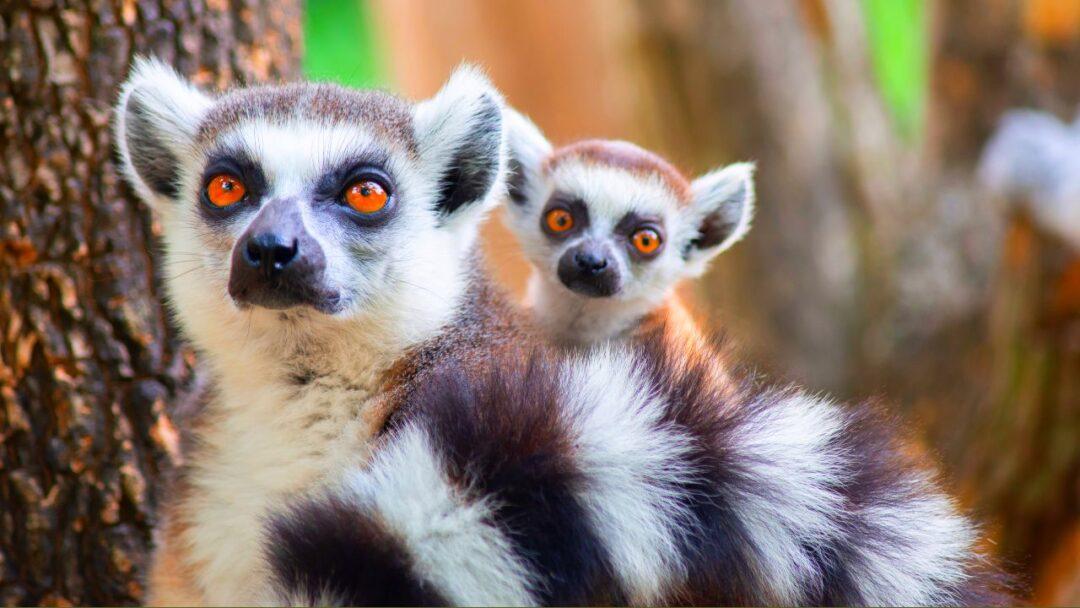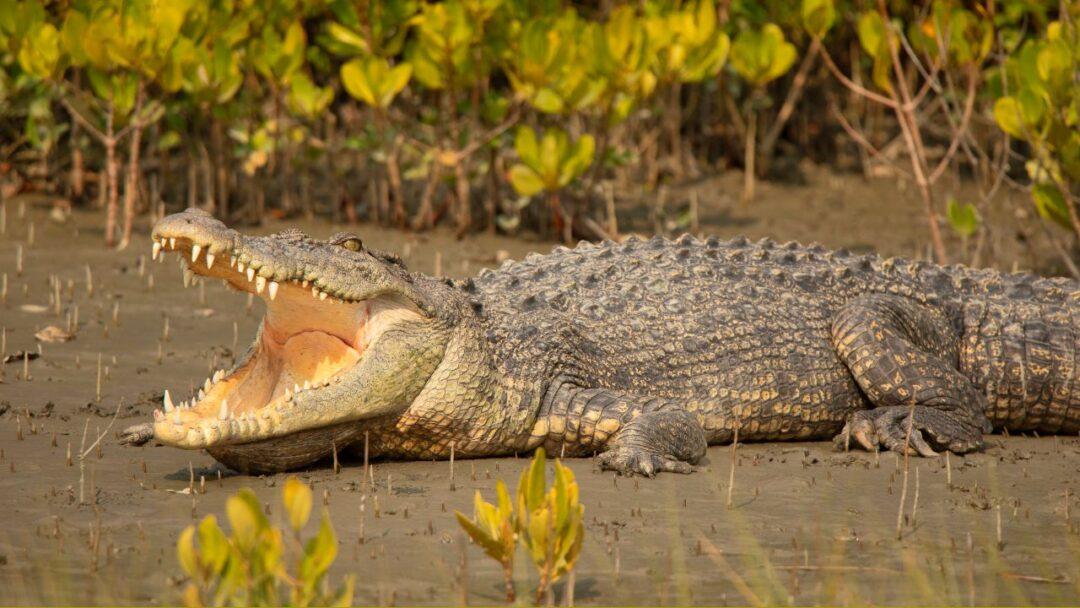Table of Contents

Introduction
Prepare to be transported into the intriguing world of lemurs! These captivating primates can only be found on the island of Madagascar, making them very unique. In this post, we will reveal ten fascinating facts about lemurs, including information about various species, strange elements, myths about them, their relevance to the ecology, and a concluding insight.
10 Fascinating Facts About Lemurs
- The Indri Lemur (Indri indri): Known for its hauntingly beautiful calls, the Indri lemur is the largest of all lemur species, reaching heights of up to three feet. It is highly endangered and revered in Malagasy culture.
- Aye-Aye Lemur (Daubentonia madagascariensis): With its distinctive elongated finger, the aye-aye is a peculiar lemur species. It taps on tree trunks and listens for hollow sounds, using echolocation to locate grubs and insects to feast upon.
- Ring-Tailed Lemur (Lemur catta): Instantly recognizable by their striking black and white striped tails, ring-tailed lemurs are highly social animals. They often engage in “sunbathing” behavior to warm up and communicate with scent marking.
- Mouse Lemur (Microcebus): The mouse lemurs are the smallest primates in the world, measuring only about four inches long. They are incredibly agile and nocturnal, leaping through the trees with ease.
- Sifaka Lemur (Propithecus): Renowned for their incredible leaping abilities, sifaka lemurs can cover impressive distances of up to 30 feet in a single bound. They are also known for their unique sideways dance.
- Dancing Lemurs: Some lemur species, like the Verreaux’s sifaka (Propithecus verreauxi), engage in a mesmerizing vertical dance, which involves leaping with outstretched arms between tree trunks.
- Lemur Diversity: Madagascar is home to more than 100 species of lemurs, making it an unparalleled hub of primate biodiversity. Each species exhibits its own unique characteristics and adaptations.
- Lemur Communication: Lemurs use a combination of vocalizations, scent marking, and body language to communicate with their group members. Some species possess complex calls that carry over long distances.
- Arboreal Lifestyle: Lemurs are predominantly arboreal, spending most of their time in the trees. They have specialized adaptations, such as a toothcomb for grooming and a long tail for balance.
- Seed Dispersal: Lemurs play a crucial role in maintaining Madagascar’s ecosystem by aiding in seed dispersal. As they consume fruits, they inadvertently distribute seeds throughout their habitat, contributing to forest regeneration.
Mysterious Facts and Myths
- The “Ghost Lemur“: Legends speak of a ghostly lemur species known as the “Ghost Lemur.” It is said to have translucent fur and hauntingly beautiful blue eyes, but its existence remains shrouded in mystery.
- Lemur Healing Powers: In Malagasy folklore, some lemurs are believed to possess magical healing powers. Their body parts are sometimes used in traditional medicine, though such practices are now discouraged.
Importance to Ecosystem
Lemurs play an important role in Madagascar’s distinctive ecosystem. They aid in the propagation of plant species as seed dispersers, adding to the diversity and resilience of the island’s forests. Their presence also aids in the regulation of insect populations and the promotion of forest regeneration.
What are lemurs?
Lemurs are primates that are native to Madagascar. They are distinguished by their huge, wide eyes and a hairy, lengthy tail. Lemurs range in size from the tiniest mouse lemurs to the largest indri lemurs.
What do lemurs eat?
Lemurs eat a variety of foods, the majority of which are fruits, leaves, flowers, and nectar. Their diet, however, varies depending on their species and habitat. Insects, small animals, and even tree sap are consumed by some lemurs.
Are lemurs endangered?
Yes, several lemur species are threatened or highly endangered. Lemurs suffer serious challenges to their survival as a result of habitat destruction, illicit hunting, and the effects of climate change. Conservation efforts are critical to safeguarding these endangered monkeys and their delicate environments.
Can lemurs swim?
While lemurs are not recognized for their swimming abilities in general, some species, such as ring-tailed lemurs, can swim short distances when necessary. Swimming, on the other hand, is not a common behavior in lemurs.
Do lemurs live in groups?
Yes, most lemur species are social animals that live in troops. Depending on the species, these units can range in size from a few individuals to over 30 lemurs. Troops’ group dynamics are critical to social bonding and collaboration.
How long do lemurs live?
The longevity of lemurs varies according to species. In the wild, lemurs have an average lifespan of 15 to 25 years. However, some species, such as ring-tailed lemurs, have been reported to live in captivity for up to 30 years or more.
Are lemurs nocturnal?
While some lemurs are entirely nocturnal, several species exhibit variable degrees of diurnal (active during the day) and cathemeral (active both at night and during the day) activity. Because of their adaptability in activity patterns, lemurs may adjust to their individual habitats and food availability.
Can lemurs jump?
Yes, lemurs are great jumpers. Their muscular hind legs and long tails assist them in maintaining balance and agility while traversing trees. Lemurs are well-adapted to arboreal living because they can leap across branches and cover long distances.
Do lemurs have predators?
In their natural settings, lemurs do have natural predators. Fossas (a cat-like carnivore), raptors (birds of prey), and other carnivorous animals are among the top predators of lemurs. One of the elements influencing lemur behavior and habitat use is predation pressure.
Are lemurs related to monkeys?
Lemurs are not monkeys, but they are both members of the primates family. Lemurs belong to the suborder Strepsirrhini, whereas monkeys belong to the suborder Haplorhini. Lemurs and monkeys evolved independently and have distinct characteristics and adaptations.
Conclusion
From the fascinating sounds of the Indri lemur to the unique adaptations of each species, lemurs capture us with their distinctive qualities. They are critical protectors of Madagascar’s biodiversity, playing an important role in the health and balance of the ecosystem.
10 Fascinating Facts About Chipmunks : NEXT POST




